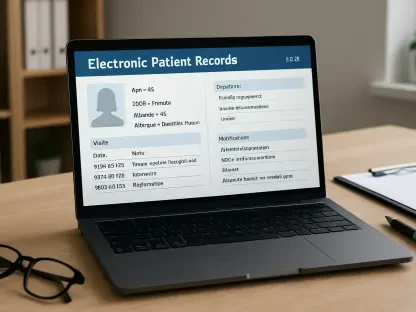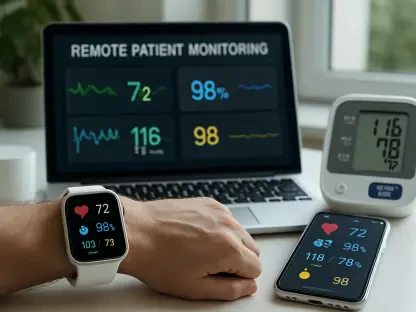In a world where navigating the healthcare system often feels like solving a complex puzzle, Aetna, a CVS Health company, has stepped forward with a game-changing approach by integrating advanced AI and digital tools to transform the experience for members and providers alike. Announced on July 29, this initiative marks a significant leap toward simplifying healthcare, making it more accessible, and personalizing care on an unprecedented scale. At the core of this transformation lies Aetna Care Paths, a pioneering digital platform available through the Aetna Health app, designed to guide individuals through their unique healthcare journeys. Alongside this, a range of app enhancements and AI-driven features aim to tackle persistent challenges such as fragmented care, opaque costs, and administrative burdens. With nearly half of Aetna’s active members engaging with the app monthly, the impact of these innovations is already reshaping how healthcare is perceived and managed. This exploration delves into the specifics of Aetna’s technological advancements and their broader implications for the industry.
Crafting a Seamless Journey with Digital Innovation
Aetna’s latest digital offerings signal a profound shift from the traditional, transactional nature of healthcare to a more integrated, journey-based model that prioritizes individual needs. The introduction of Aetna Care Paths exemplifies this vision by providing a centralized platform where members can access personalized healthcare roadmaps. Tailored to specific conditions, this tool offers clear guidance on benefits, connects users with appropriate care teams, and integrates wellness programs into a cohesive experience. By addressing the often chaotic navigation of medical systems, Aetna Care Paths empowers members with actionable insights, ensuring they no longer feel lost in a maze of information. This focus on creating a streamlined path not only enhances user confidence but also sets a new standard for how insurers can leverage technology to meet consumer expectations in a rapidly evolving digital landscape.
Beyond the flagship platform, Aetna’s commitment to simplifying healthcare extends to a suite of updates within the Aetna Health app that enhance usability and engagement. Features such as scheduling vaccinations at nearby locations and visualizing claims costs through intuitive graphics make the app a practical tool for everyday health management. The addition of user-friendly options like dark mode for improved readability further demonstrates an understanding of diverse user needs. These enhancements are not mere conveniences; they reflect a broader strategy to foster a deeper connection between members and their healthcare resources. With such a significant portion of users actively relying on the app, Aetna’s efforts to refine the digital experience are proving effective in building trust and encouraging proactive health management among its member base.
Powering Personalization Through Artificial Intelligence
Artificial intelligence serves as the backbone of Aetna’s strategy to deliver highly personalized and efficient healthcare solutions. Tools like Smart Compare utilize AI to recommend providers that best match a member’s specific requirements, ensuring that care is both relevant and accessible. Additionally, an AI-driven chat feature provides immediate responses to inquiries, reducing wait times and enhancing user satisfaction. These innovations highlight how Aetna anticipates member needs, offering real-time solutions that make interactions with the healthcare system smoother and less intimidating. By embedding AI into the core of its digital offerings, Aetna is not only improving the member experience but also paving the way for a more responsive and adaptive approach to health insurance that could inspire industry-wide change.
On the operational side, AI plays a crucial role in streamlining processes that have long burdened both members and staff. Automated claims processing and provider bill matching are prime examples of how technology can alleviate administrative hassles, allowing for faster and more accurate handling of financial transactions. This efficiency extends beyond paperwork, as AI-driven tools help reduce errors and ensure transparency in billing practices. The result is a significant reduction in stress for members who often grapple with unexpected costs or delays. Furthermore, by freeing up resources through automation, Aetna enables its staff to focus on higher-value tasks, such as direct member support. This dual benefit underscores the transformative potential of AI in creating a healthcare environment where technology and human care work hand in hand to achieve better outcomes.
Enhancing Accessibility with User-Centric App Features
Aetna’s dedication to accessibility shines through in the thoughtful enhancements made to the Aetna Health app, designed to cater to a broad spectrum of user preferences and needs. Members can now easily schedule vaccines at convenient locations like CVS Pharmacy or MinuteClinic, eliminating barriers to essential preventive care. Visual tools, such as charts that break down claims costs, provide clarity on financial aspects that are often confusing, empowering users to stay informed about their expenses. Additionally, the introduction of a dark mode interface addresses readability concerns, particularly for those with visual sensitivities or who prefer low-light settings. These updates collectively transform the app into a versatile hub for managing health needs, ensuring that technology serves as an enabler rather than a hurdle for diverse populations.
Engagement is another critical focus of these app improvements, as evidenced by the high percentage of active members who rely on it monthly. By continuously refining features based on user feedback and emerging trends, Aetna ensures that the app remains relevant and indispensable in daily healthcare management. The ability to access a wide range of services—from booking appointments to tracking medical expenses—within a single platform fosters a sense of control and convenience that resonates with users. This emphasis on creating an inclusive digital experience not only boosts member satisfaction but also reflects a growing industry trend toward consumer-centric design. Aetna’s approach in this area demonstrates a keen awareness of the importance of meeting users where they are, both technologically and personally, to drive meaningful interaction with healthcare systems.
Supporting Providers with Innovative Efficiency Tools
Aetna’s technological advancements extend beyond member benefits to significantly support healthcare providers, recognizing their pivotal role in delivering quality care. A standout feature is the AI-driven clinical care summaries, which have been shown to save nurses up to 90 minutes daily on administrative tasks. This time-saving innovation allows medical staff to redirect their focus toward direct patient interactions, fostering stronger relationships and enabling more personalized care. By reducing the burden of paperwork and routine processes, Aetna ensures that providers can prioritize the human aspects of their roles, addressing both physical and emotional needs of members. This initiative highlights a critical balance between leveraging technology for efficiency and preserving the essential personal touch in healthcare delivery.
The implications of supporting providers in this manner ripple across the entire healthcare ecosystem, benefiting members through improved service quality. When nurses and other staff have more time to engage in meaningful conversations, they can better understand individual concerns, leading to tailored interventions and enhanced trust. Aetna’s focus on provider efficiency also aligns with broader industry goals of reducing burnout among healthcare workers, a persistent challenge that impacts care delivery. By integrating AI to handle repetitive tasks, Aetna not only optimizes workflows but also contributes to a healthier, more sustainable environment for those on the front lines. This dual focus on technological support and human connection positions Aetna as a leader in addressing systemic challenges through thoughtful innovation.
Addressing Cost Challenges with Transparent Solutions
One of the most pressing issues in healthcare is the lack of cost transparency, and Aetna tackles this head-on with digital tools designed to empower members financially. Personalized cost-tracking features within the Aetna Health app allow users to monitor their healthcare spending in real time, providing a clear picture of where their money goes. Coupled with digital claims submission and AI-powered bill matching, these tools simplify the often daunting process of managing medical expenses. By demystifying costs, Aetna helps alleviate the anxiety that accompanies unexpected bills, enabling members to make informed decisions about their care. This transparency is a crucial step toward building trust in an industry where financial opacity has long been a source of frustration for many.
The broader impact of these cost management solutions lies in their ability to foster a sense of agency among members, encouraging proactive engagement with their healthcare plans. When individuals can easily access and understand their financial obligations, they are more likely to seek timely care without fear of hidden fees. Aetna’s investment in these features also reflects a growing recognition within the sector that addressing economic barriers is as vital as improving clinical outcomes. By prioritizing clarity in financial dealings, Aetna not only enhances the member experience but also sets a precedent for how insurers can use technology to solve ingrained problems. This focus on cost transparency ultimately contributes to a more equitable healthcare landscape where financial literacy becomes an integral part of health management.
Reflecting on a Tech-Driven Healthcare Evolution
Looking back, Aetna’s rollout of AI and digital tools marked a pivotal moment in redefining how healthcare could be accessed and experienced. The launch of Aetna Care Paths, alongside app enhancements and provider-support innovations, showcased a comprehensive approach to addressing systemic inefficiencies. These efforts tackled critical pain points like navigation complexity and cost ambiguity while amplifying the human element through time-saving tools for nurses. As Aetna paved the way with substantial investments in technology, the industry took note of the potential for digital solutions to create a more connected and responsive system. Moving forward, the focus should remain on scaling such innovations to reach broader populations, ensuring equitable access to these transformative tools. Exploring partnerships with other healthcare entities and continuously adapting to user feedback will be key steps in sustaining this momentum and shaping a future where technology and care remain seamlessly intertwined.









